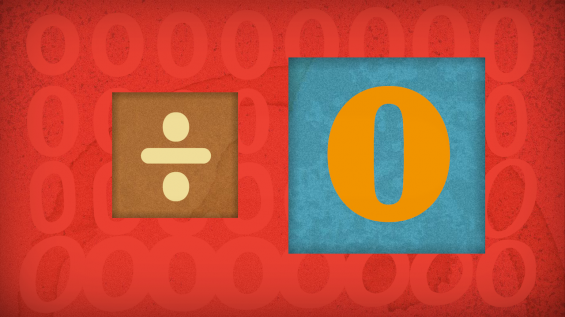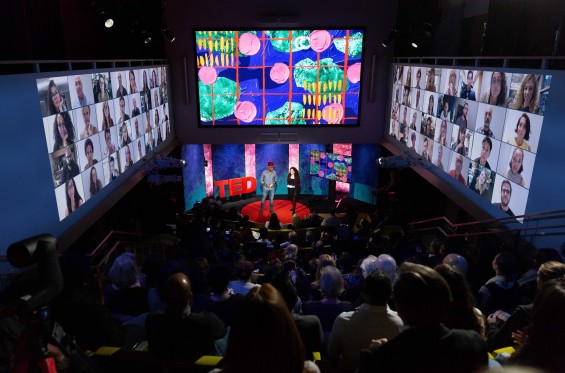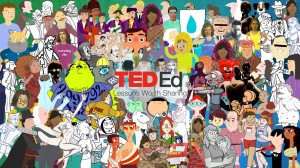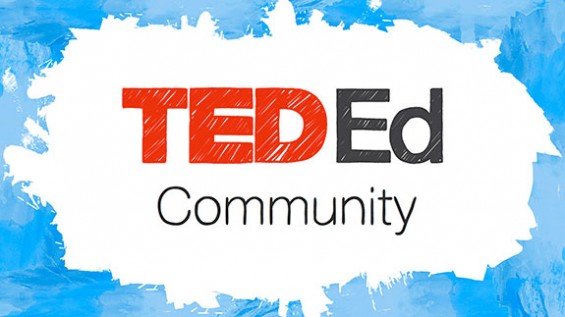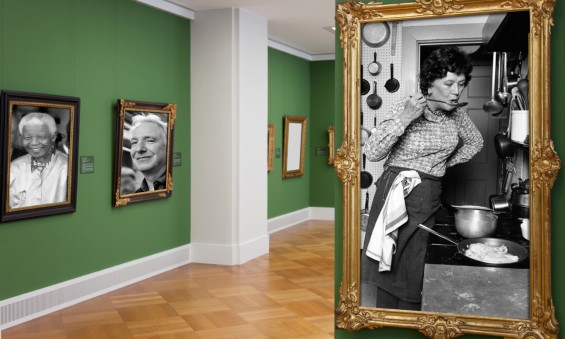
What can we learn from people who succeed later in life?
As a society, we tend to focus on prodigies — the young stars in their fields. But what if we looked at the people at the opposite end of the timeline instead? By studying them, network scientist Albert-László Barabási has come up with lessons that can benefit us all.
When, at the age of 50, John Fenn joined the faculty at Yale, he was old by academic standards. But then again, he was an inveterate late starter. He published his first research paper at 32, a decade after leaving graduate school. He was 35 when he got his first academic appointment, at Princeton, where he started working with atomic and molecular beams, research that he continued to pursue at Yale. Though Fenn was hard-working and diligent, he was largely a low-impact scientist. His department chair must have felt some relief when Fenn turned 70 and they could force him to take mandatory retirement.
Yet Fenn had no interest in stopping. Three years earlier, at the age of 67, he was already semi-retired at Yale, stripped of lab space and technicians, when he published a paper on a new technique he called “electrospray ionization.” He turned droplets into a high-speed beam, allowing him to measure the masses of large molecules and proteins quickly and accurately. He saw it as a breakthrough and he was right — his technique quickly turned into a must-have tool in labs.
So, after idling at Yale, he relocated to Virginia Commonwealth University. He opened a new lab and what he did in these later years was revolutionary. Improving upon his initial idea, he offered scientists a robust way to measure ribosomes and viruses with previously unbelievable accuracy, transforming our understanding of how cells work. In 2002, by then in his mid-eighties, he was awarded the Nobel Prize in Chemistry.
Fenn’s story embodies a simple message: Your chance of success has little to do with your age. It’s shaped by your willingness to try repeatedly for a breakthrough. Realizing this was transformative for me — I started seeing Fenns everywhere.
There’s Alan Rickman, whose first movie role came at 46; Ray Kroc, who joined the McDonald’s franchise at 53; Nelson Mandela, who emerged after 27 years in jail and became his country’s president at 76. There’s Julia Child, who was 50 when she hosted her first TV show.
But these late-in-life successes had something else in common besides tenacity. Their pathways to success were guided by a hidden factor that unveiled itself throughout their careers. My team and I named it the Q-factor, and it helped us answer the question: Where do highly successful ideas and products come from?
New projects always start with an idea, no matter what creative field you’re in. Still, the importance or novelty of the idea isn’t something we always know in advance. So let’s call it r for “random idea,” letting r stand for a number that captures its value. Opening another fast-food joint in a strip mall? Give it an rclose to zero. Building a working teleportation machine? That could have a huge r ... if you can pull it off.
But ideas are cheap, a truism often parroted by venture capitalists. Your ability to take the idea and turn it into a useful product determines the size of the check an investor is willing to cut for you. The same is true in any occupation: A terrific idea in clumsy hands rarely leads to an important outcome. Your ability to turn an idea into a discovery is equally important, and that varies dramatically from person to person.
We called this ability a person’s Q-factor, which allowed us to translate the process of innovation into an equation. Each of us takes a random idea, with value r, and using our skill, we turn it into a discovery or “success” S, which captures its impact on the world. If we want to predict this impact, we need to establish how the two factors — the as-yet-unknown merit of the idea, or its r, and one’s Q-factor — work to determine a project’s ultimate success, or S. Multiply your Q-factor by the value of your next idea, r, and you get a formula to predict its success. Written as a formula, it is:
S = Qr
In other words, the success of a product or a deal, or the impact of a discovery, will be the product of a creator’s Q-factor and the value of idea r.
So, if an individual with a low Q-factor comes across a great idea with a huge rvalue, the impact will still be mediocre, as the resulting product — or Qr — is diminished by the small Q-factor. Fantastic idea, poor execution. Think Apple’s first handheld Newton, with its inept handwriting recognition. The reverse also happens: A creative person with a high Q-factor can put out multiple weak or mediocre — or low r — products. Think AppleLisa, NeXT, the G-4 Cube, MobileMe. Never heard of them? They’re in the graveyard of Jobs’s many failures. If an idea has a small r value, no matter how high the Q, the product will be cheapened. Great execution, poor idea.
Then there are those perfect-storm instances where the idea and the creator both shine. When the Q-factor and r are both high, they enhance each other, leading to a career-defining breakthrough. Think of the iPhone — a fantastic idea with brilliant execution, resulting in the product that defined Jobs’s legacy.
Once my team and I figured out how to measure a scientist’s Q-factor, we learned it remained unchanged throughout her career. That’s right. The data was clear: We all start our careers with a given Q, high or low, and that Q-factor stays with us until retirement. Well, I had a hard time believing that I was as good a scientist when I wrote my first research paper at twenty-two, the one with absolutely zero impact, as I am now. And you probably feel you weren’t anywhere near as good a teacher, writer, doctor or salesperson in your twenties as you are now. However, we spent six months rechecking our findings, and we came to the same conclusion.
Does this finding apply to those outside the sciences? We were able to answer that after we figured out how to measure the Q-factor in another domain: communication. Onur Varol, a new lab member, looked at Twitter users, measuring how good they are at putting out tweets that resonate with users.
When we compared individuals with the same number of followers, we found that some were much more talented at engaging with audiences than others. There seemed to be no systematic growth or decay as Twitter users honed their skills — the high-Q-factor performers stayed that way, and the low ones didn’t budge. The minute anyone joined Twitter, a Q-factor was set and stayed roughly the same for months and years.
But what if our Q-factor is low? Then there’s some hard advice I can offer you: If you are repeatedly failing at breaking through, you may very well be pursuing the wrong vocation. I’ve experienced this myself. In high school, I was preparing to be a sculptor. But I wasn’t good, to be honest. Even back then, I was better at physics. So I followed my Q-factor, abandoning the art studio for the research lab.
Or, maybe you’re stuck in a deeply solitary field. I’ve been there as well, working for years on quantum dots, an obscure discipline where even the biggest discovery gets little traction. I switched to networks, an area where my work could reach a wider audience.
The point is that if our Q-factor isn’t resonating with our job, we should consider if we’ve pinned our hopes on the wrong career path. Once you find that perfect fit, that area or profession where your Q-factor shines, there’s really only one more thing you need to do: not give up.
The key to long-term success from a creator’s perspective is straightforward: let the qualities that give you your Q-factor do their job by giving them a chance to deliver success over and over. In other words, successful people engage in project after project after project. They don’t just count their winnings; they buy more lottery tickets. They keep producing. Take writer J.K. Rowling, who followed Harry Potter by creating a successful mystery series (under the name Robert Galbraith). Each time she publishes a new book, her new fans go back and read the older volumes as well. Each new book, then, breathes life into her career, keeping her whole body of work present and relevant.
A high Q-factor, combined with Fenn-like persistence, is what drives the engine for career-long success. People like Shakespeare, Austen, Edison, Curie and Einstein are not remembered for a single work of theirs that changed everything. They tower over their fields thanks to their exceptional Q-factors — and their willingness to test their luck repeatedly.
And there’s another smart way to exploit your Q: collaboration. Harness your network to help you with your projects. If nothing else, this prompts you to keep trying. Teamwork can motivate us. For me, the students and postdocs — and the many projects we do together — force me to continue to be productive. Since success, too, is a collective phenomenon, our response to high-quality work or talented people can shape our fates.
Stubborn creativity, combined with a John Fenn–like tenacity, not only gives our lives their essential meaning, it also provides the true secret to career-long success. The Japanese artist Katsushika Hokusai is one perfect, parting exemplar of that. “All I have produced before the age of 70 is not worth taking into account. At 73 I have learned a little about the real structure of nature,” he wrote at 75. What followed made my day. “When I am 80 I shall have made still more progress. At 90, I shall penetrate the mystery of things. At 100 I shall have reached a marvelous stage, and when I am 110, everything I do, whether it be a dot or a line, will be alive.”
Hokusai lived to be 89, and he created his most memorable works in the final decades of his life, including the iconic woodblock print The Great Wave off Kanagawa. The image is of an enormous white-capped wave that slowly unfurls over a half-drowned skiff, dwarfing Mount Fuji in the background. It’s an apt depiction of how success ebbs and flows over a lifetime, building sudden momentum and crashing over us, only to start all over again.
Excerpted from the new book The Formula: The Universal Laws of Success by Albert-László Barabási. Reprinted with permission from Little, Brown, a division of Hachette Book Group, Inc. Copyright © 2018 by Albert-László Barabási.
Watch his TEDMED talk here:
ABOUT THE AUTHOR
Albert-László Barabási is the Robert Gray Dodge Professor of Network Science and a Distinguished University Professor at Northeastern University, where he directs the Center for Complex Network Research. He holds appointments in the Departments of Physics and College of Computer and Information Science, as well as in the Department of Medicine at Harvard Medical School and Brigham and Women Hospital in the Channing Division of Network Science, and is a member of the Center for Cancer Systems Biology at Dana Farber Cancer Institute. He is the author of several books including “Network Science,” “Linked: The New Science of Networks” and “Bursts: The Hidden Pattern Behind Everything We Do.” This piece was adapted for TED-Ed from this Ideas article.
